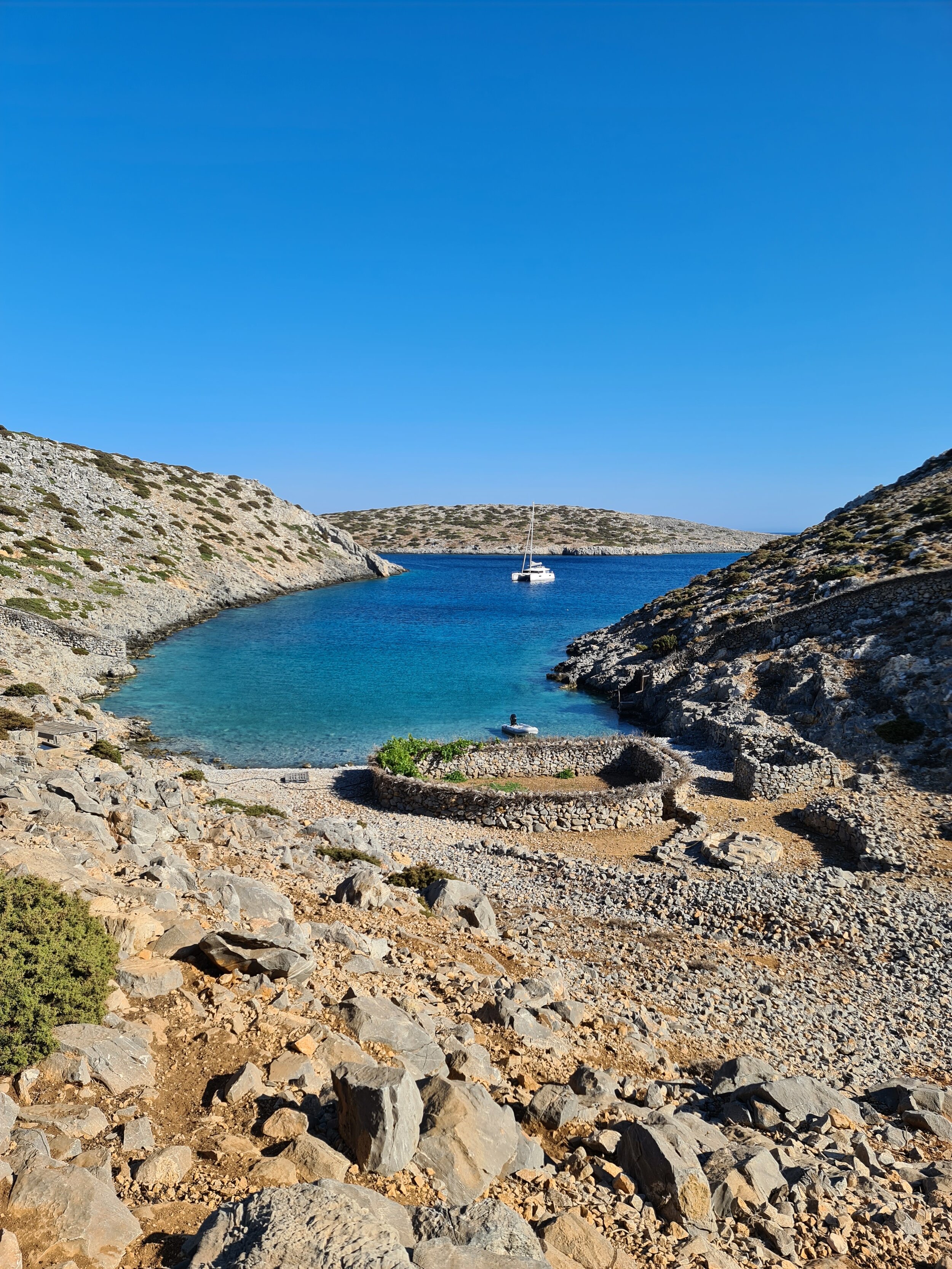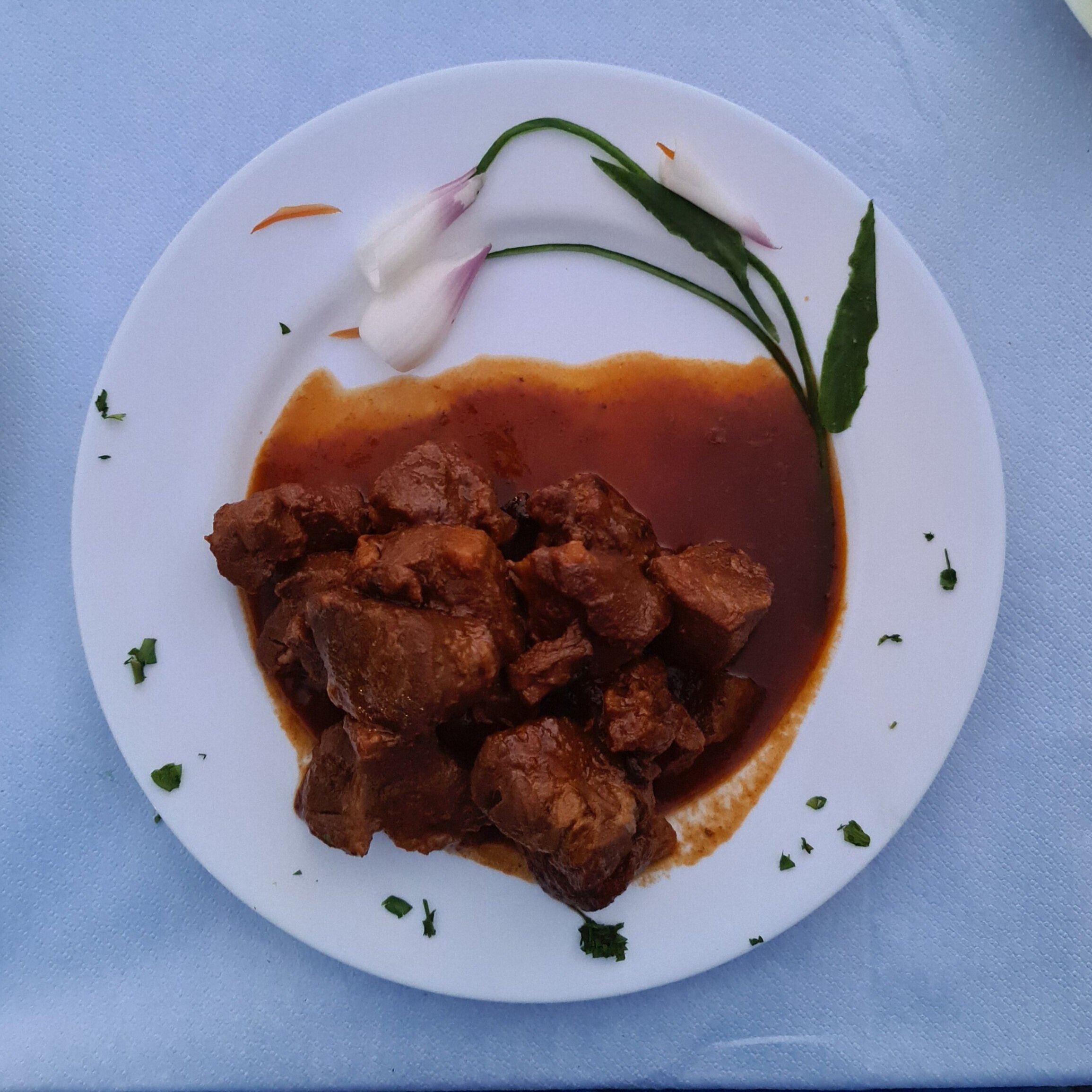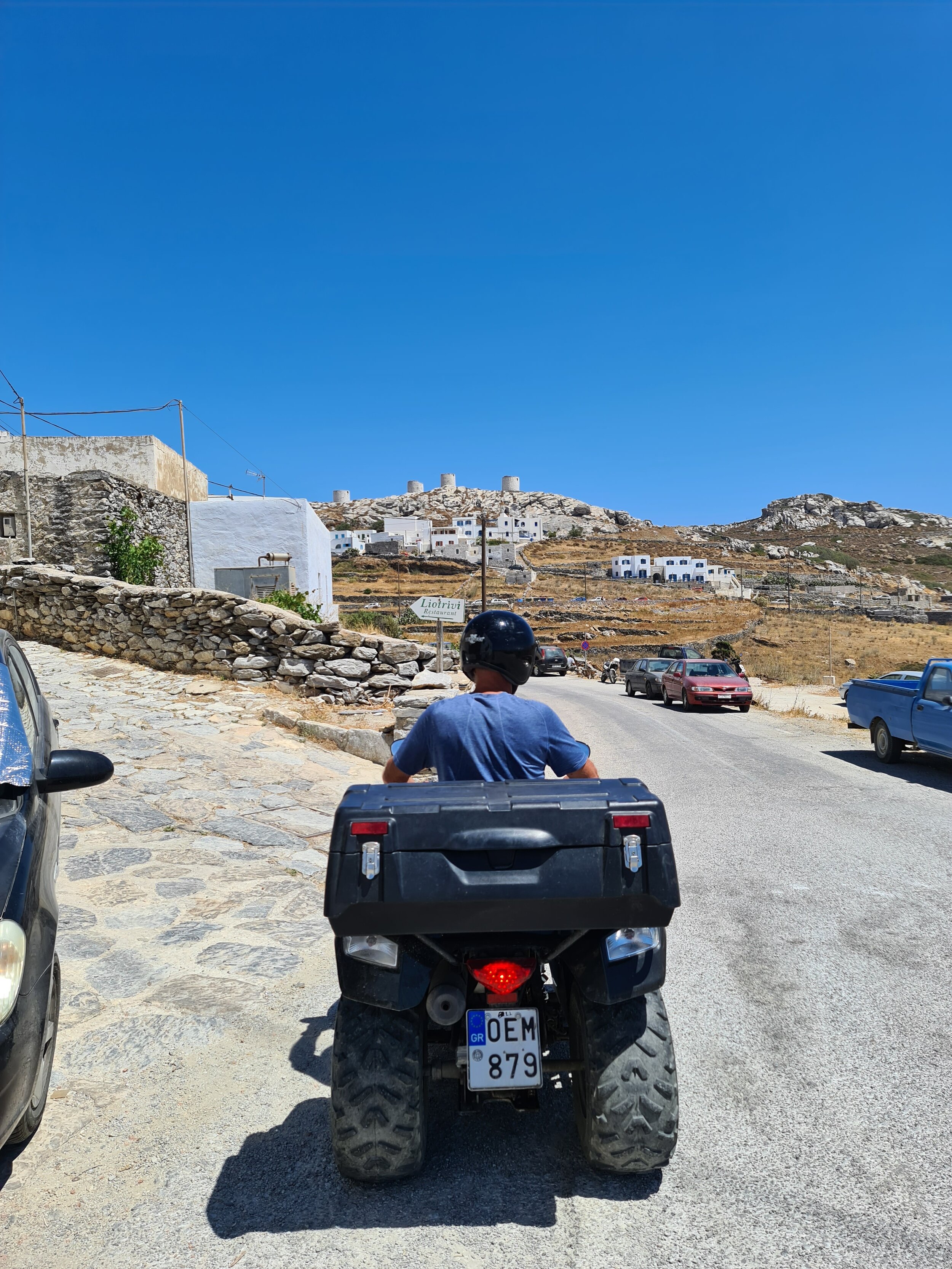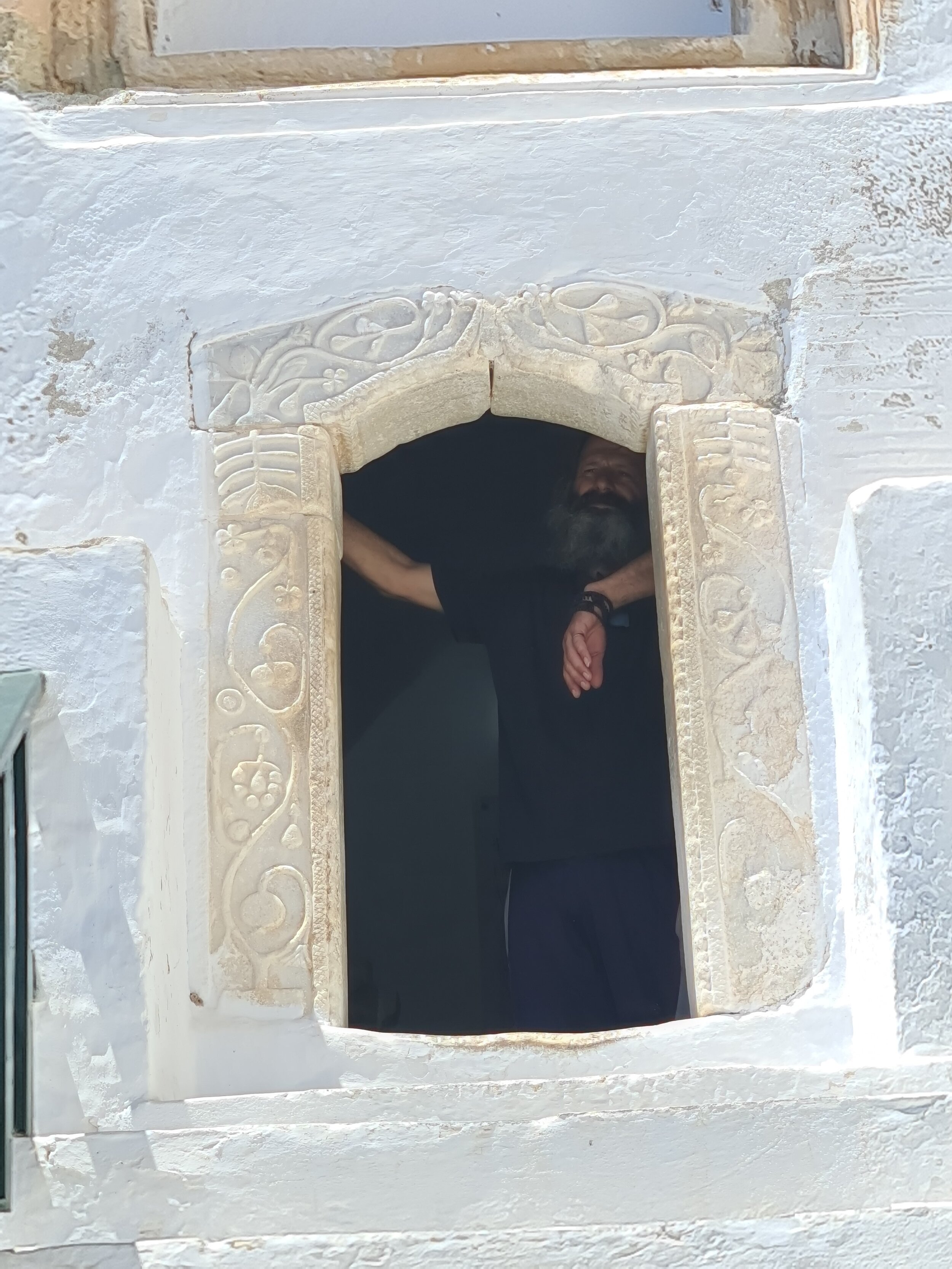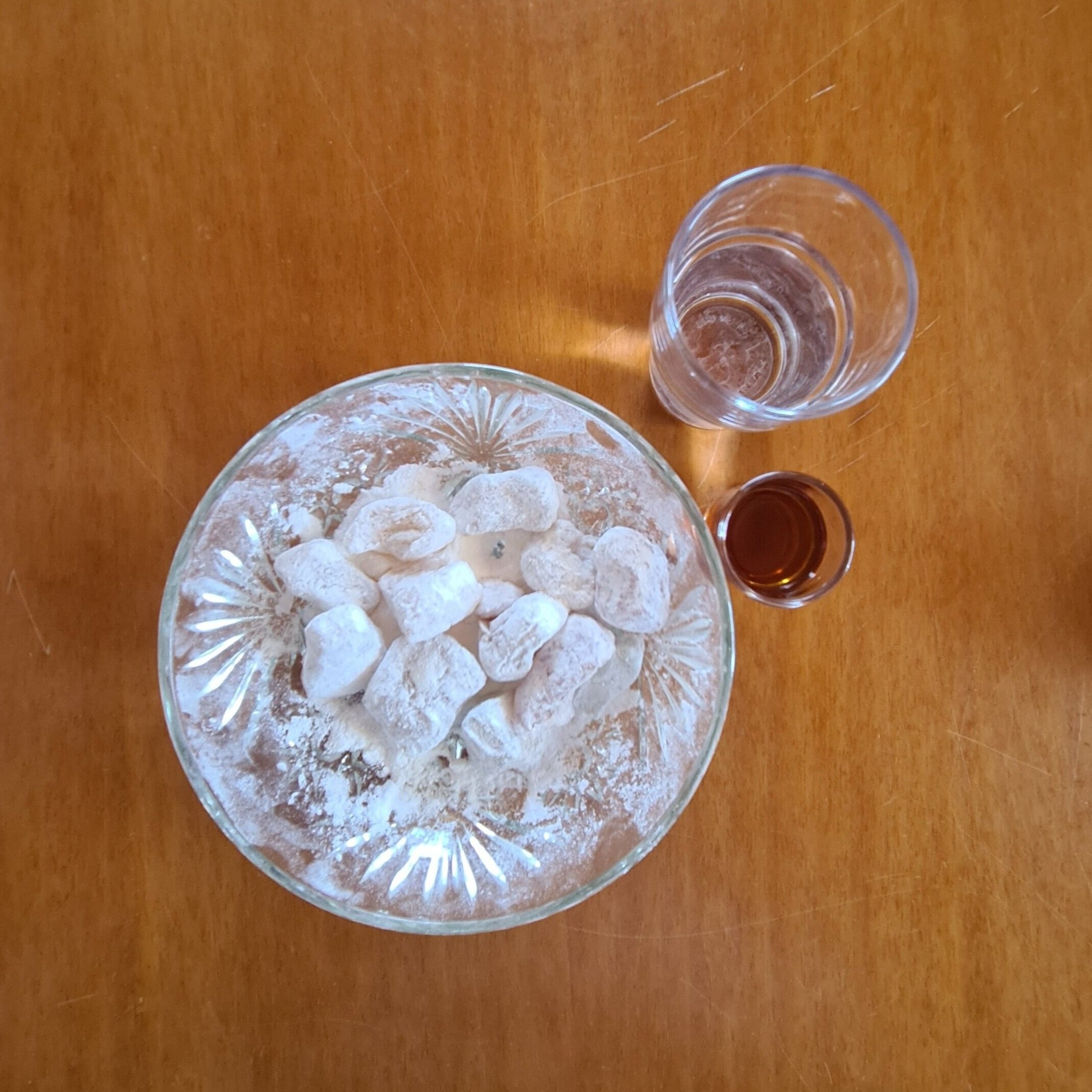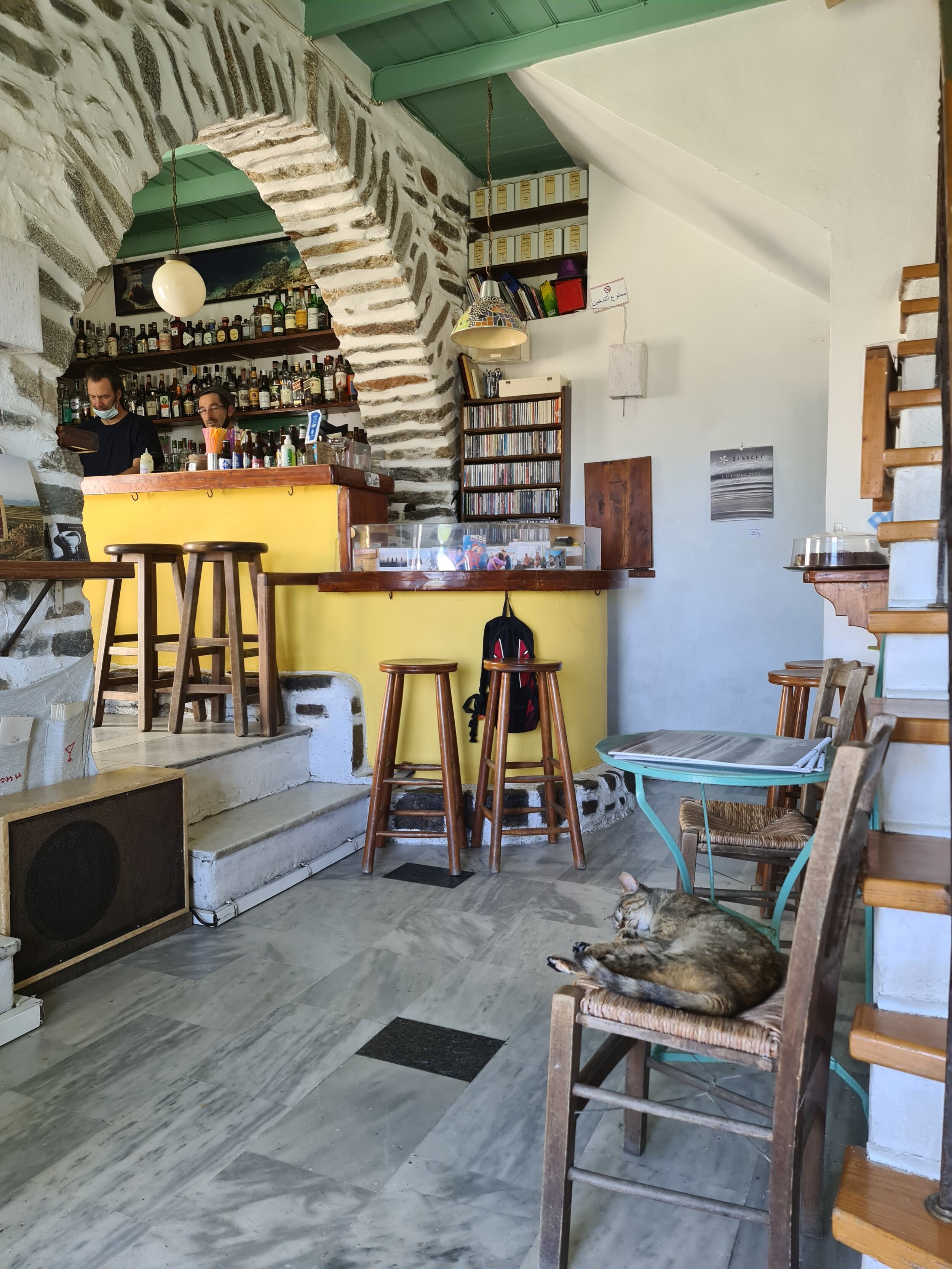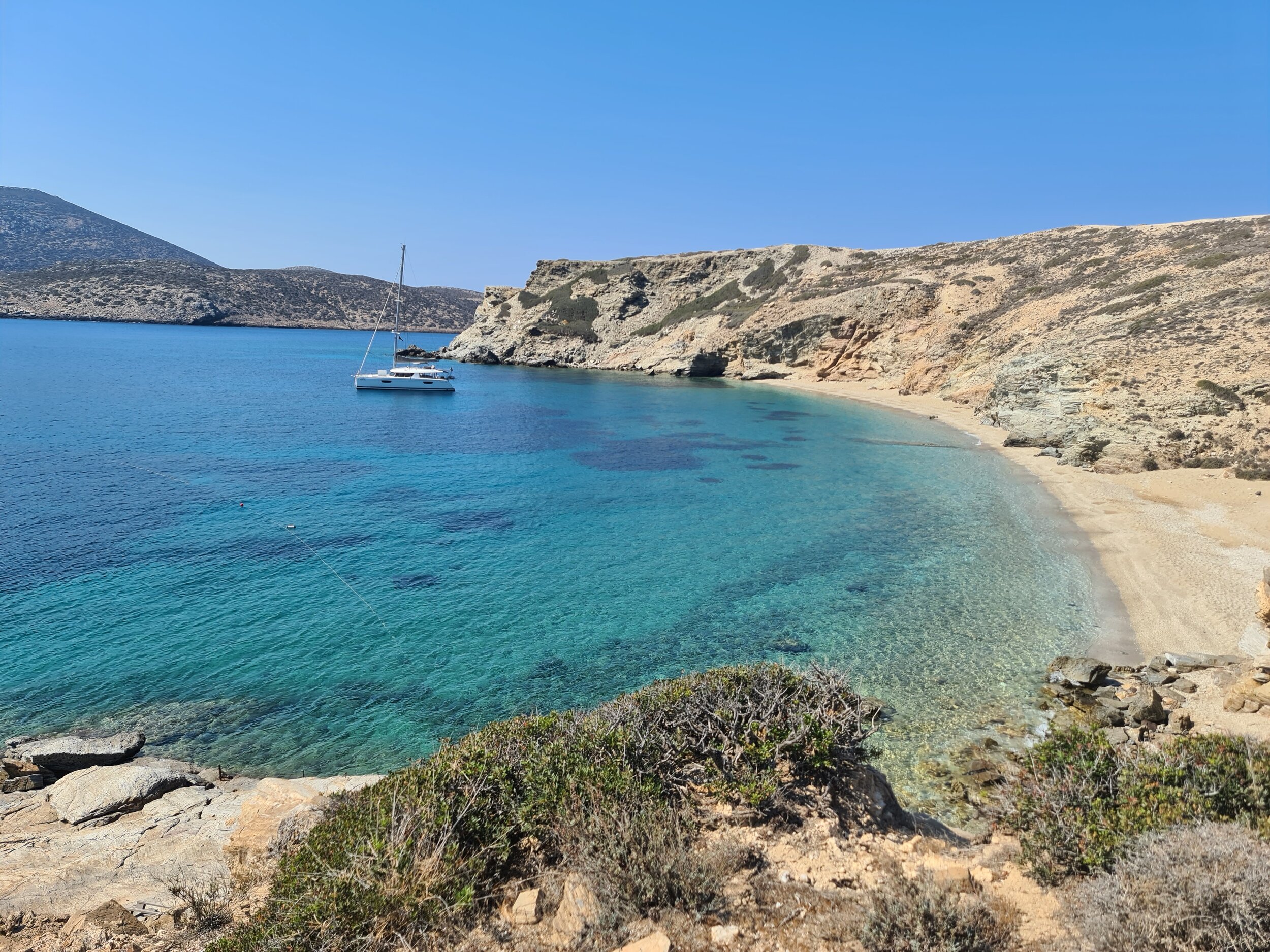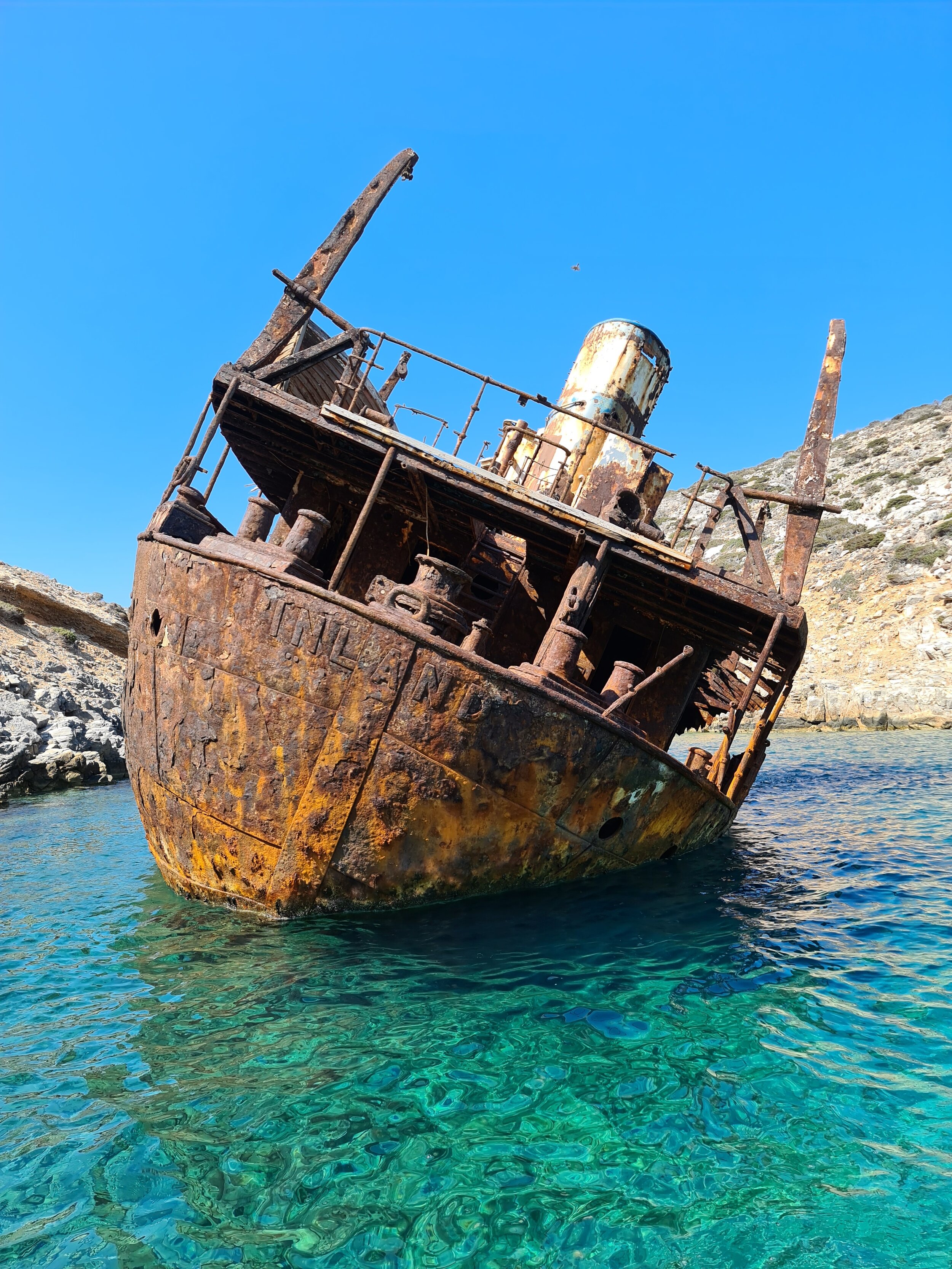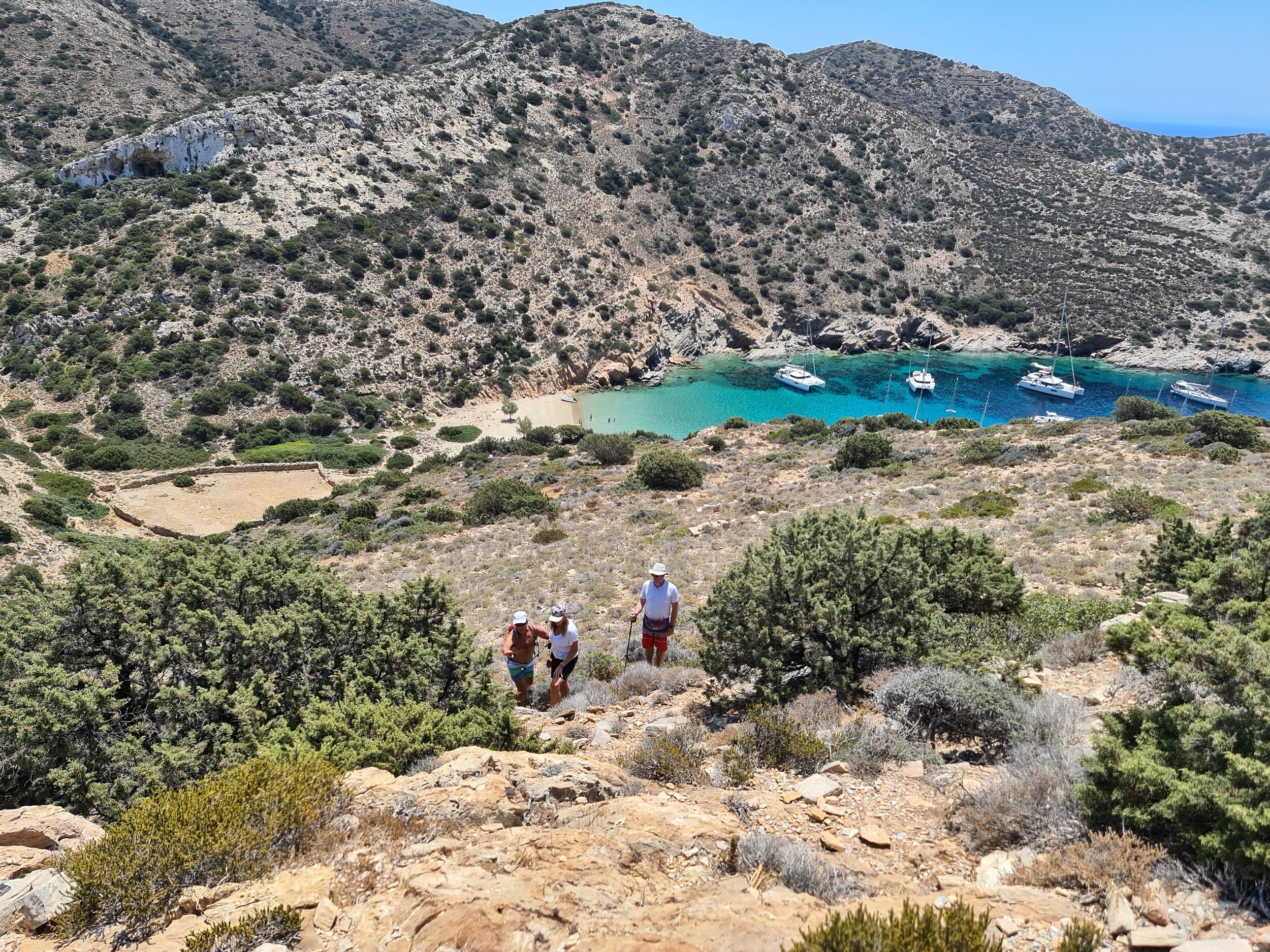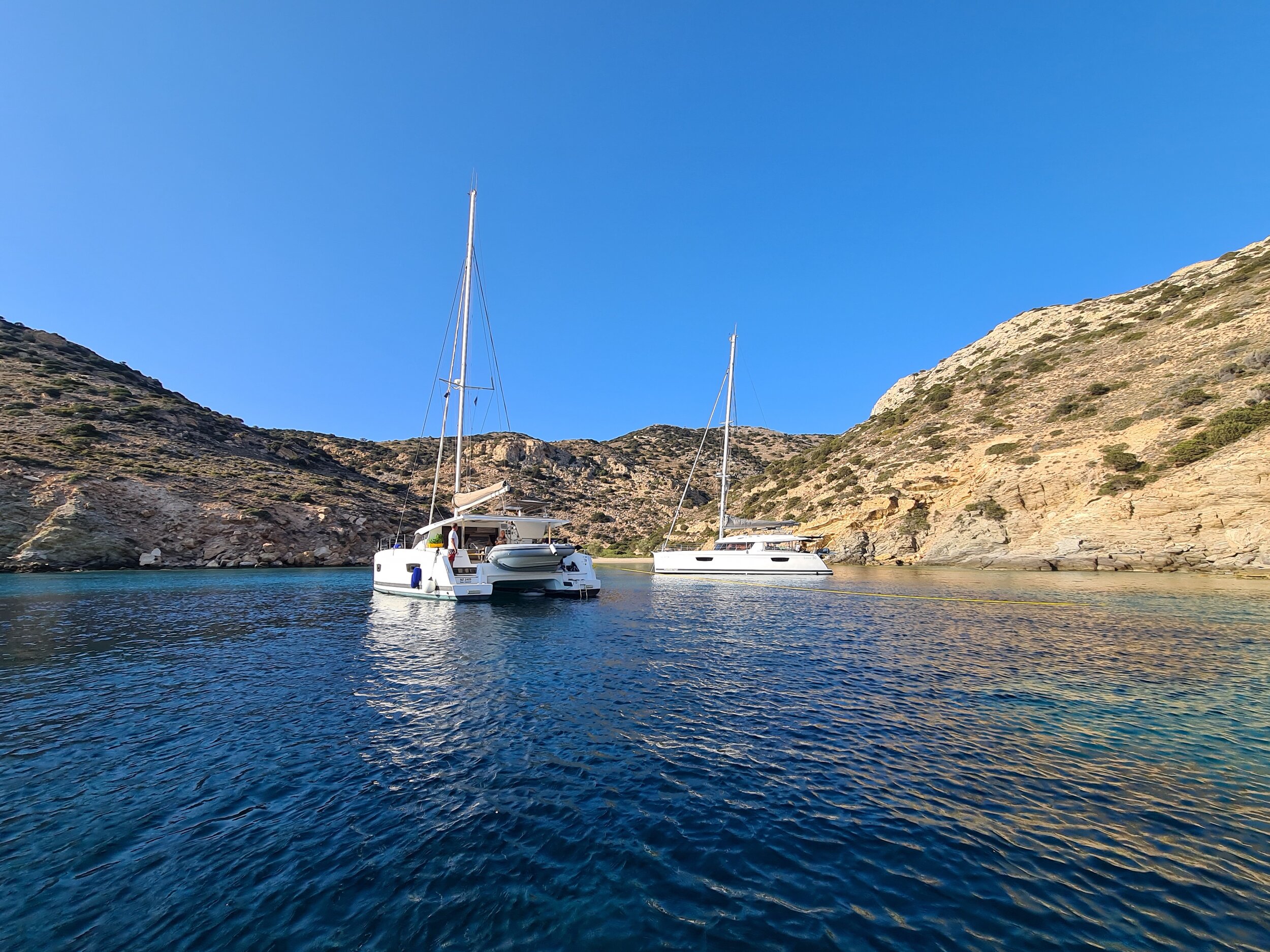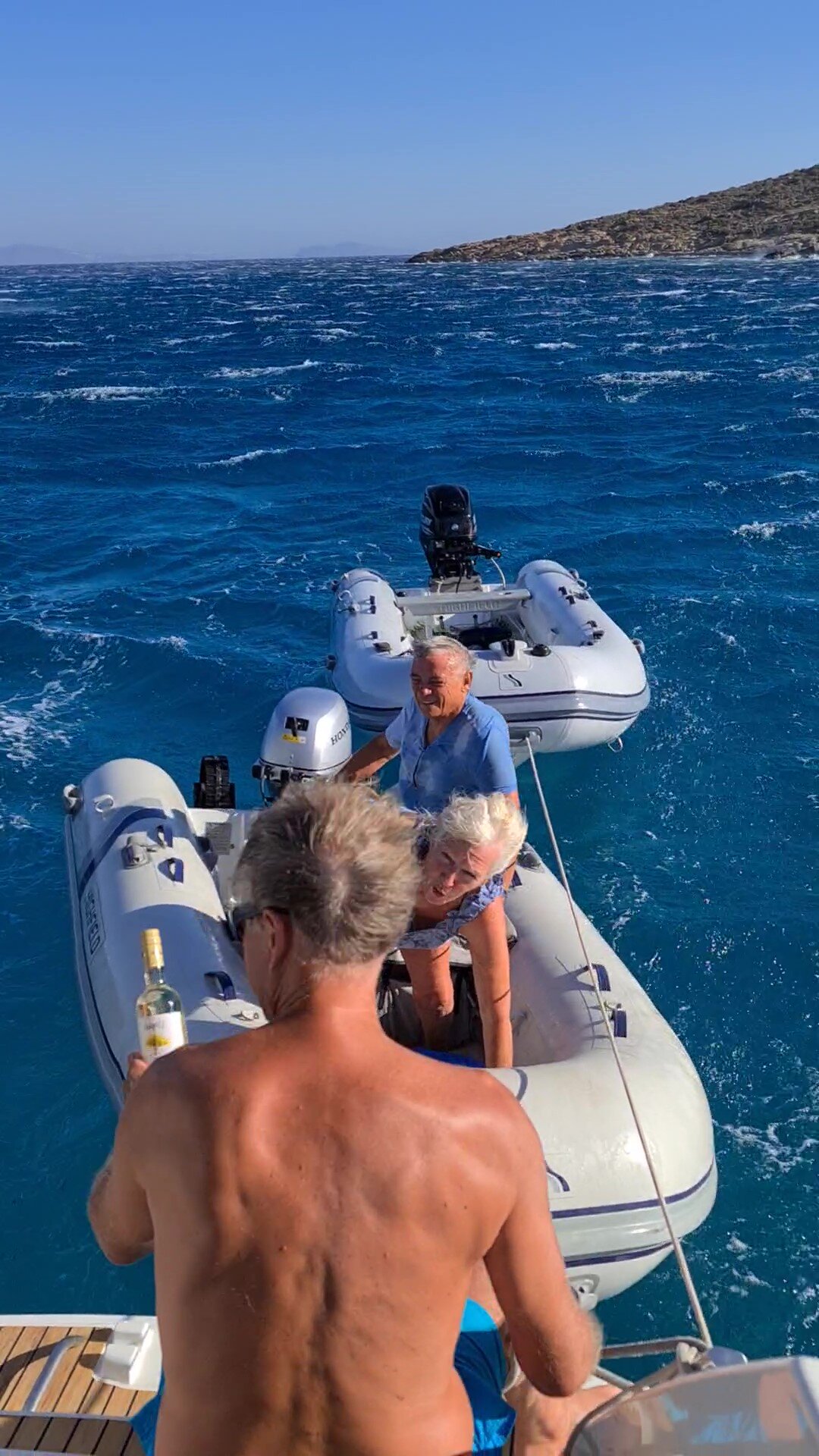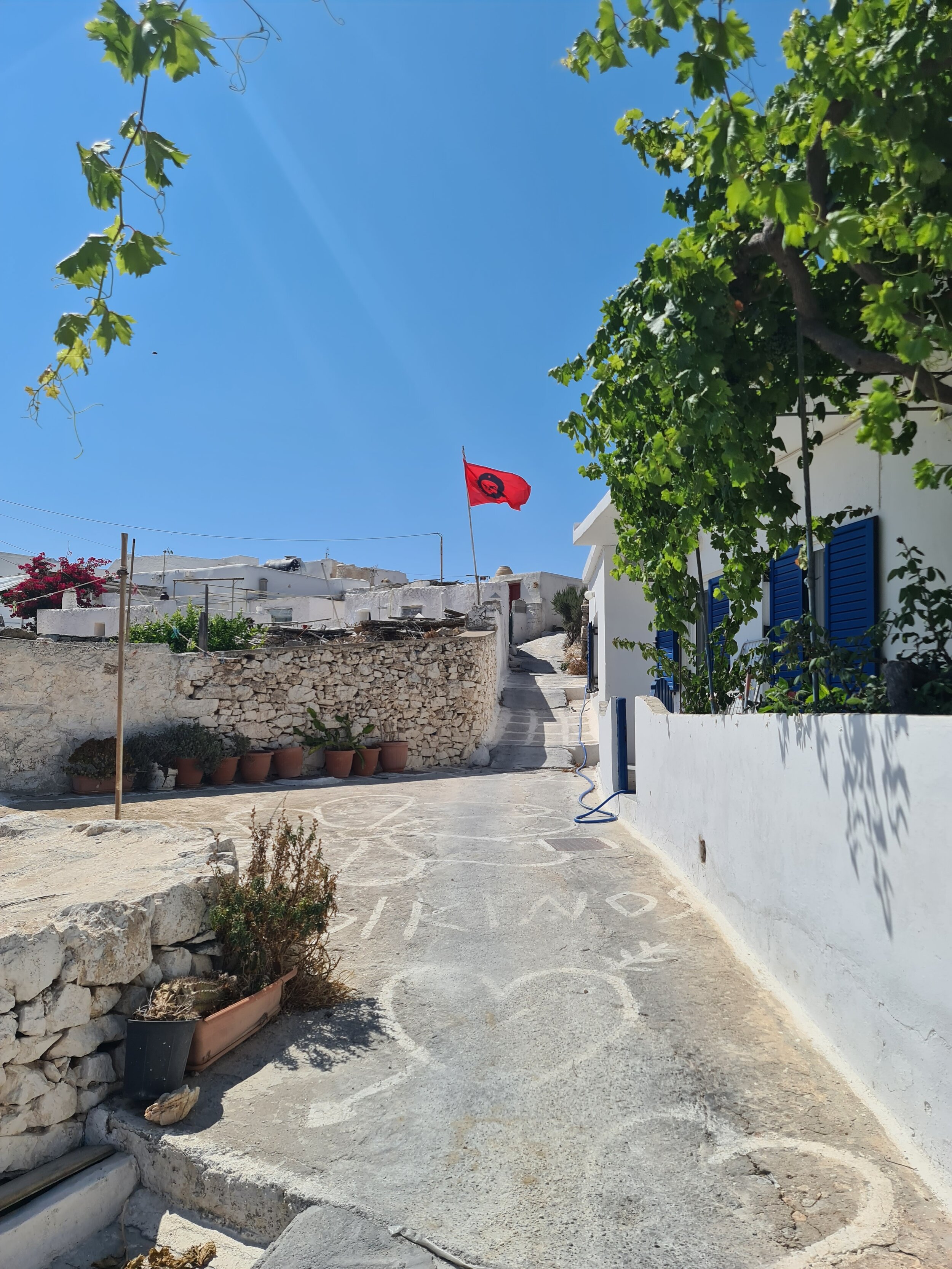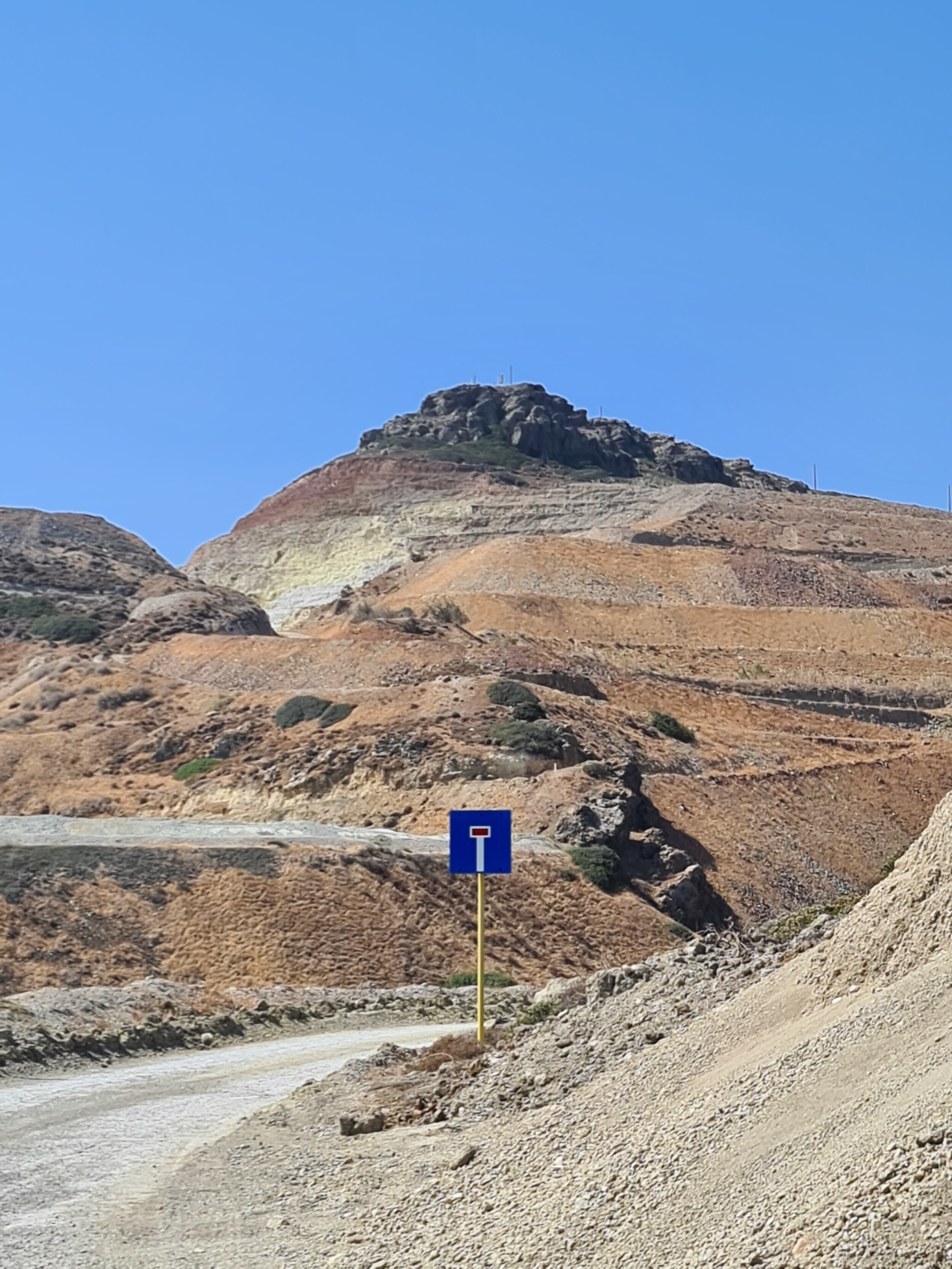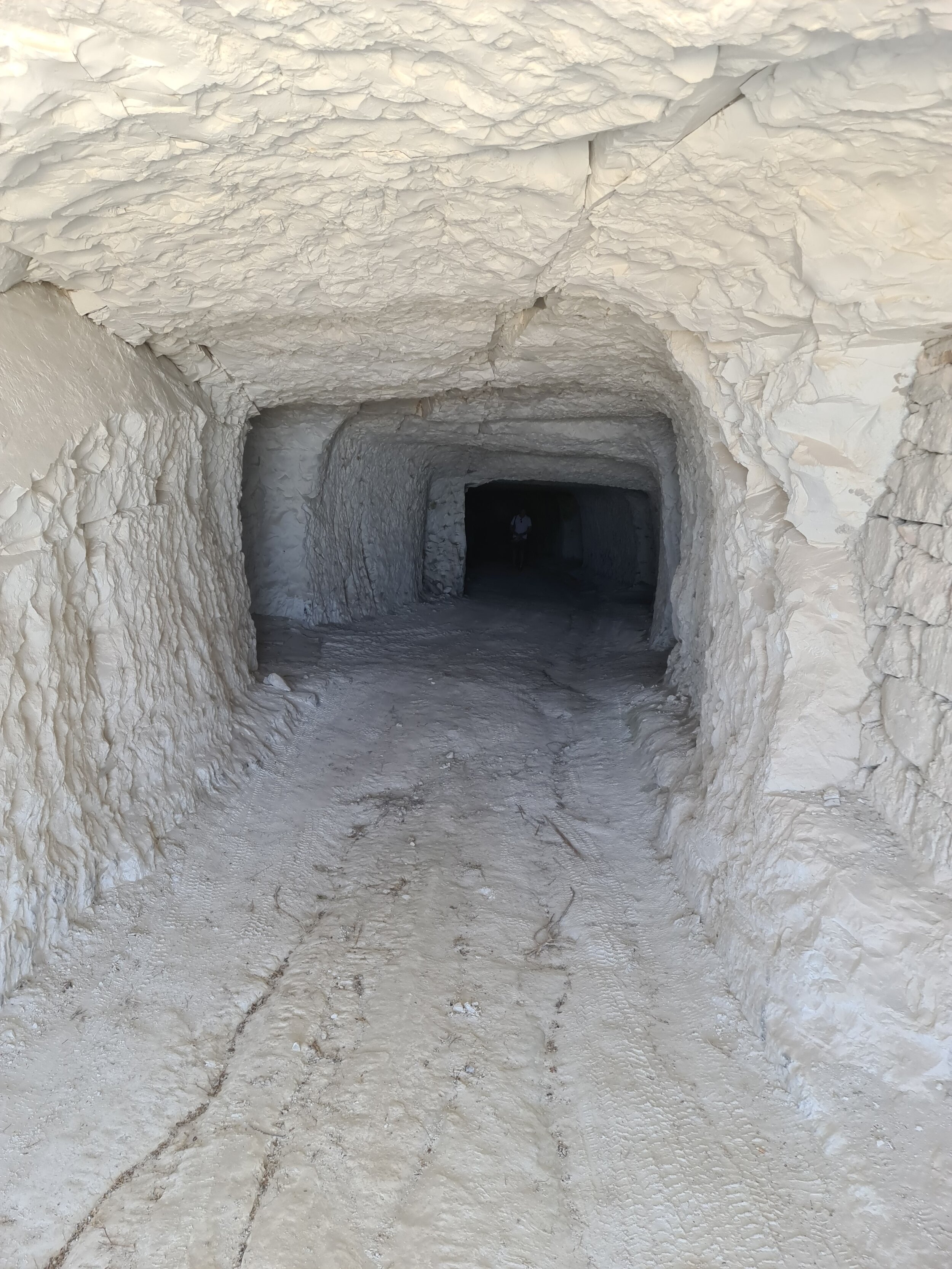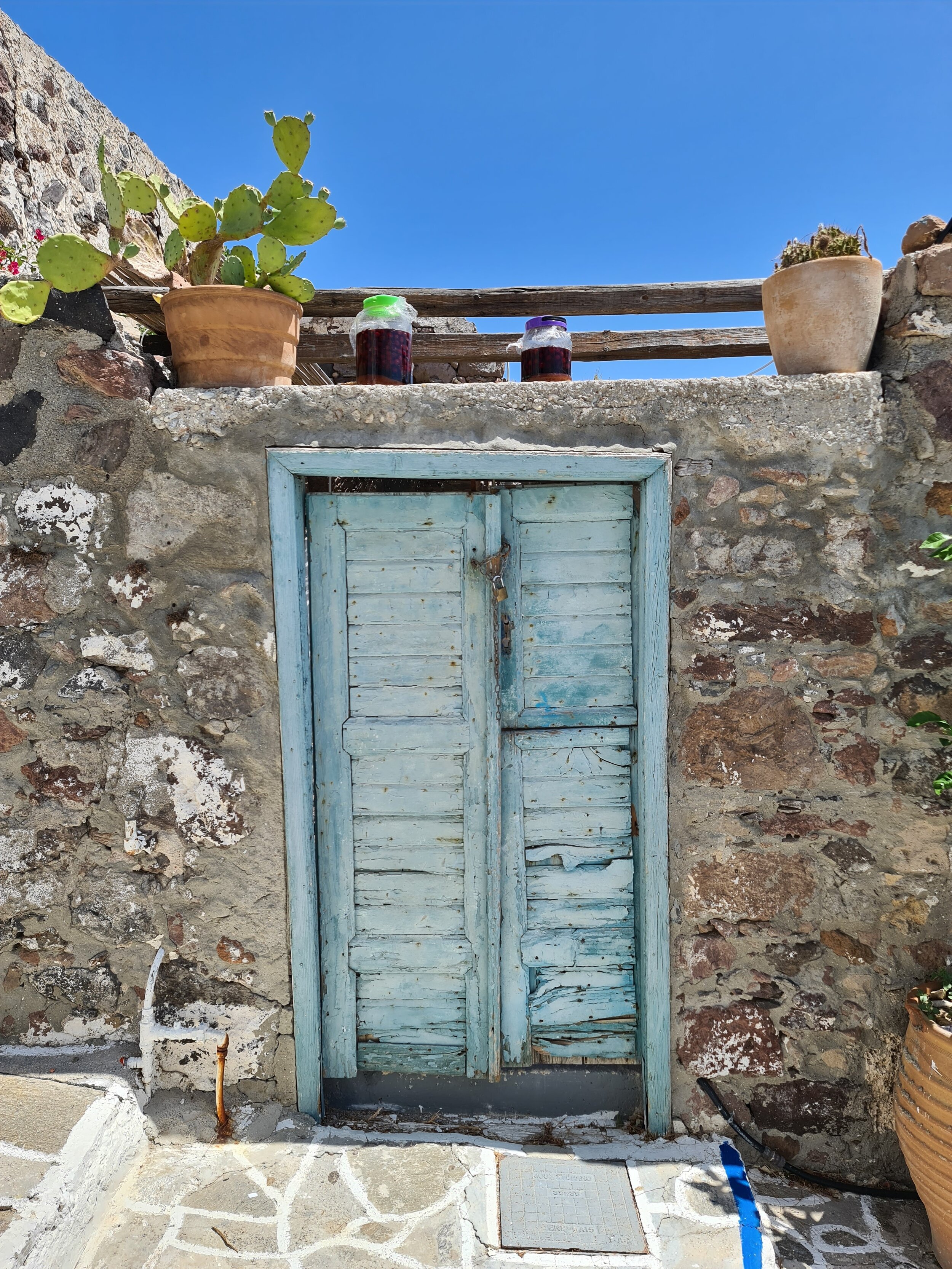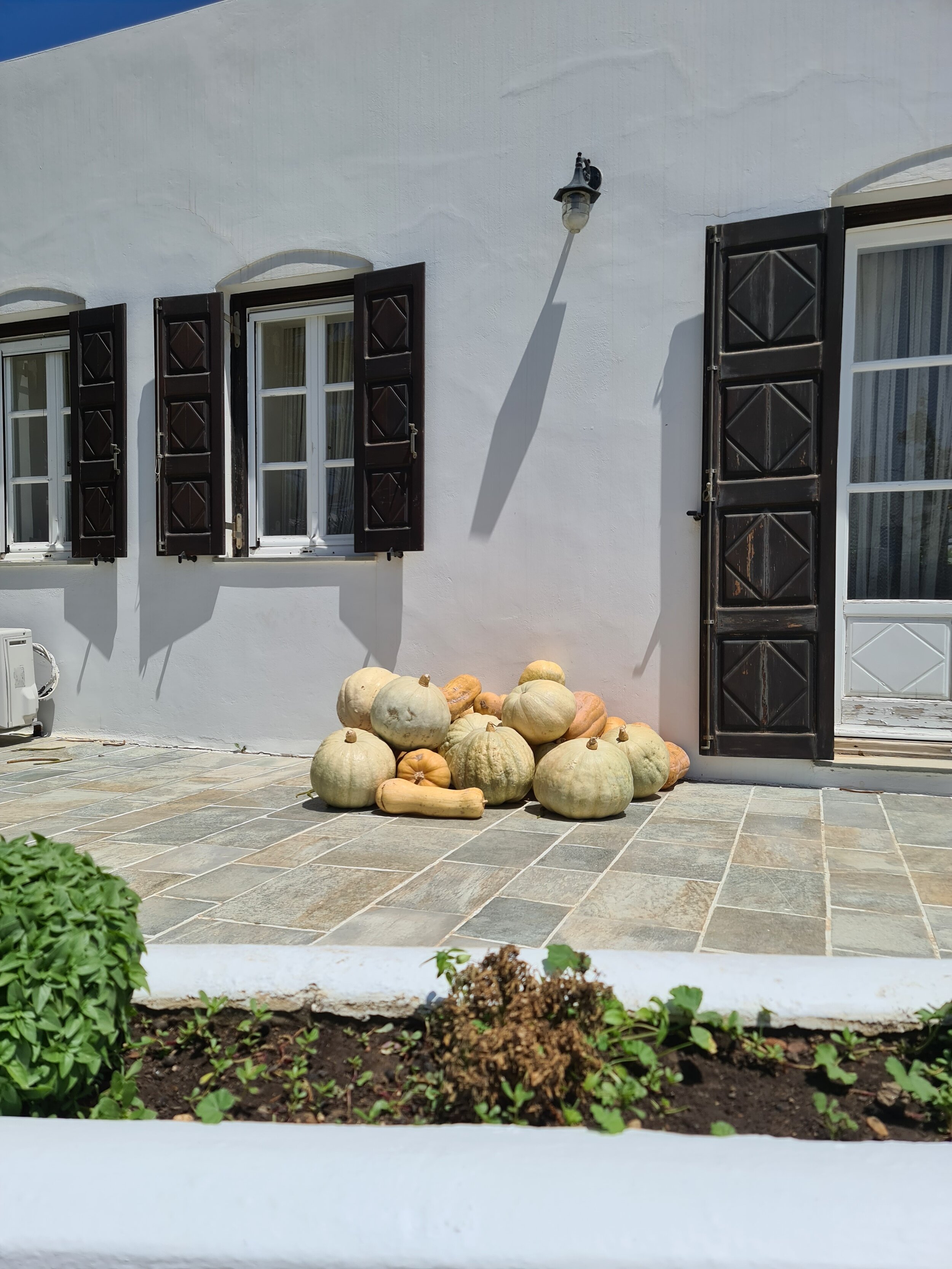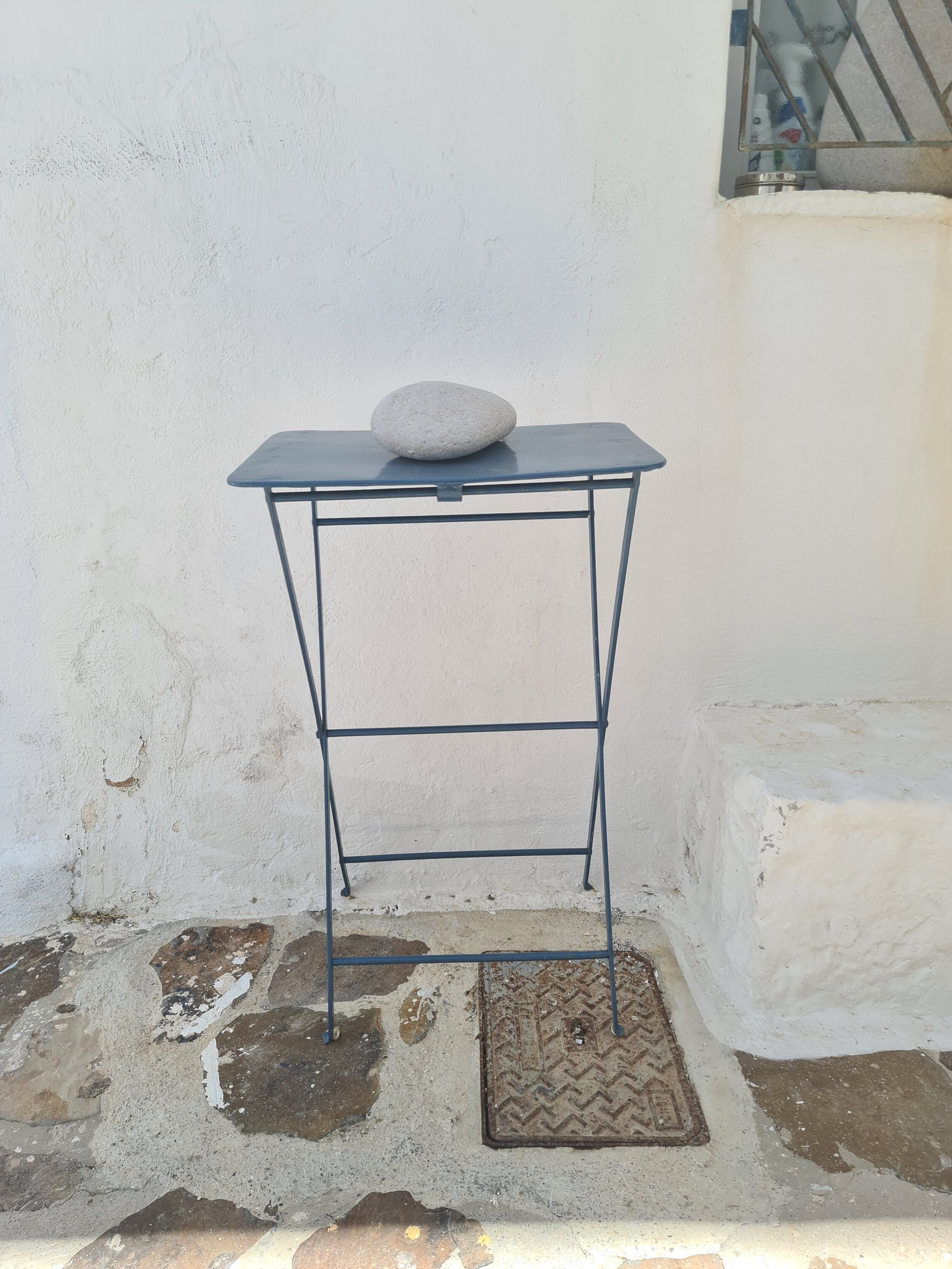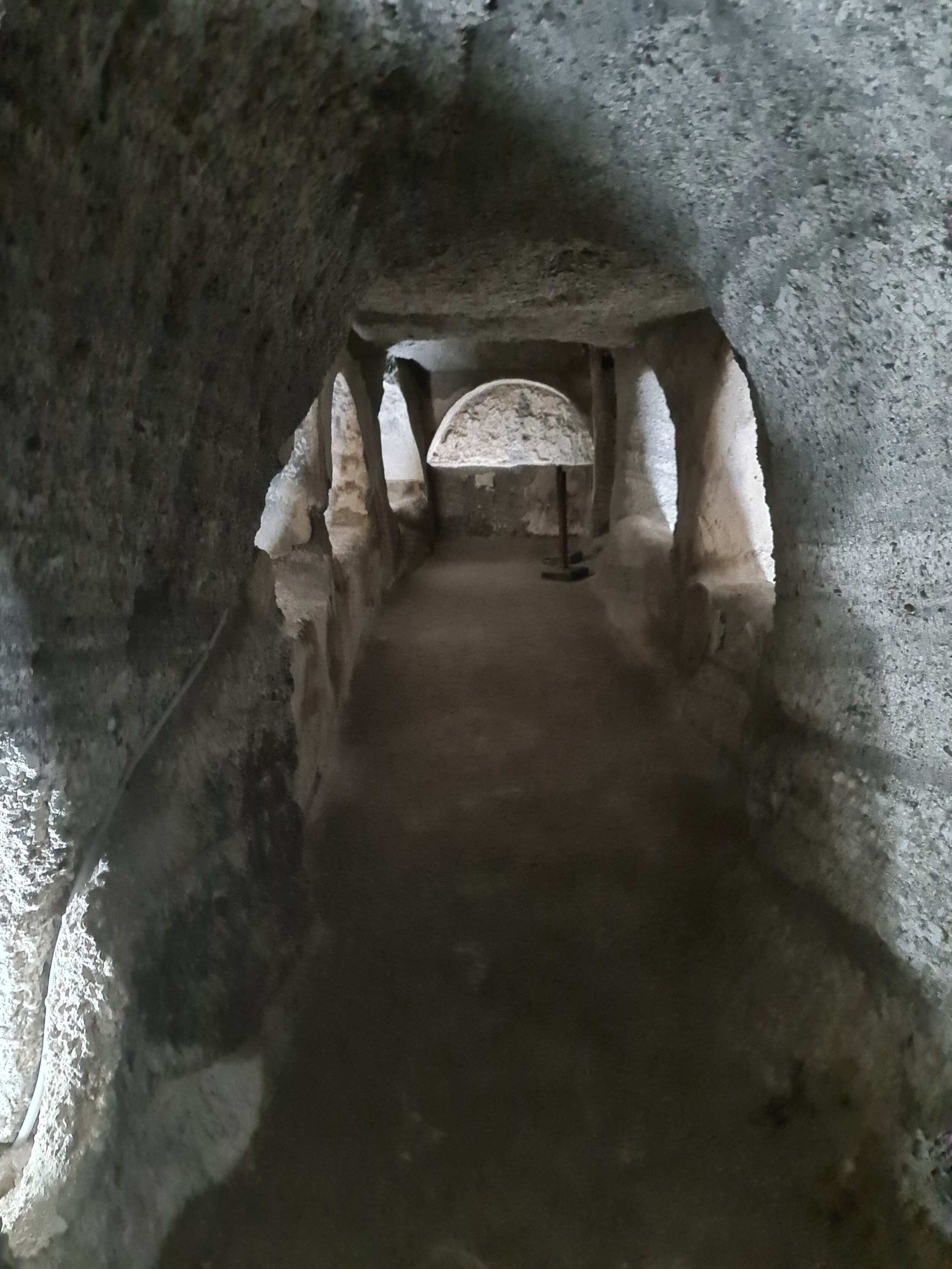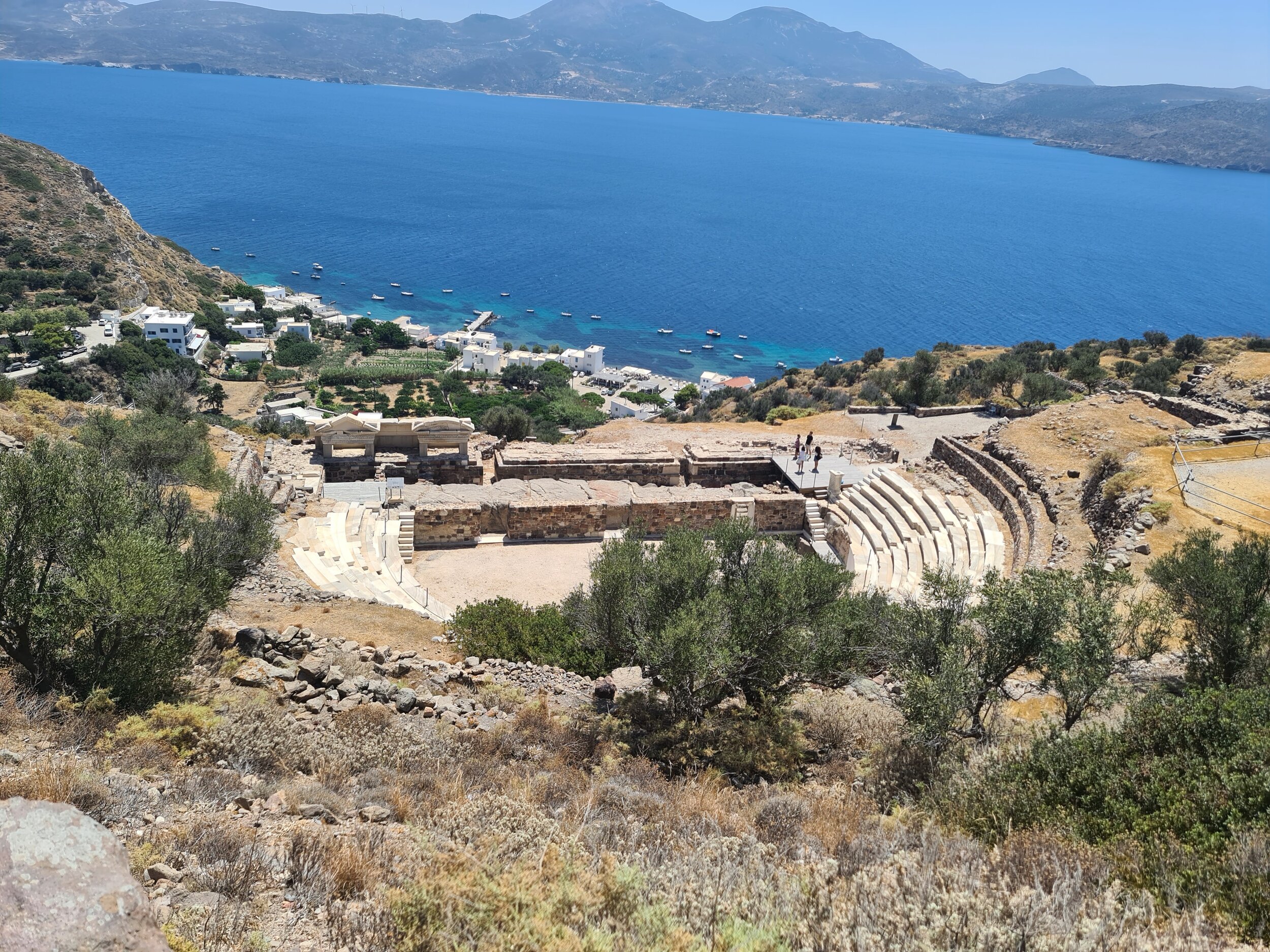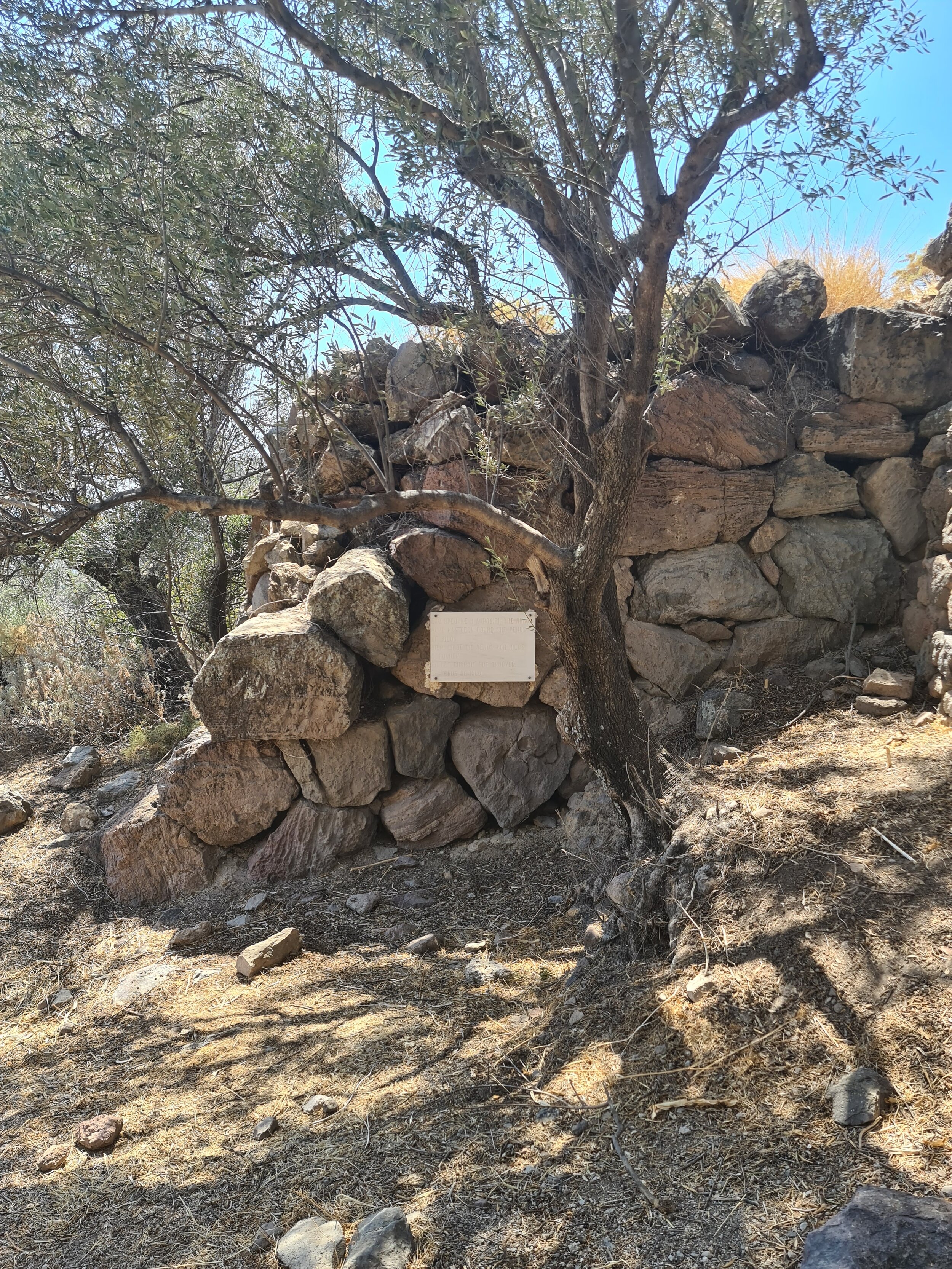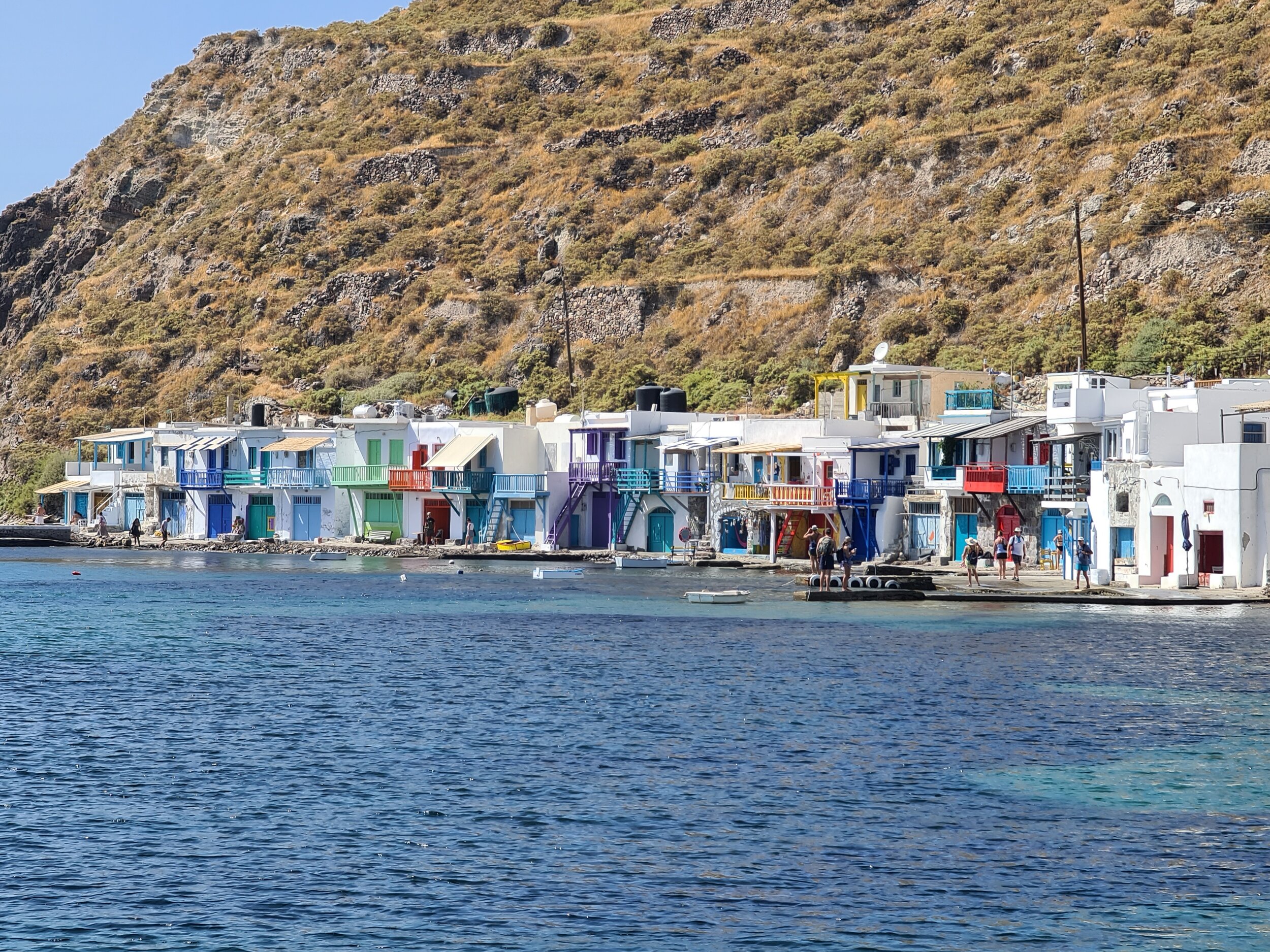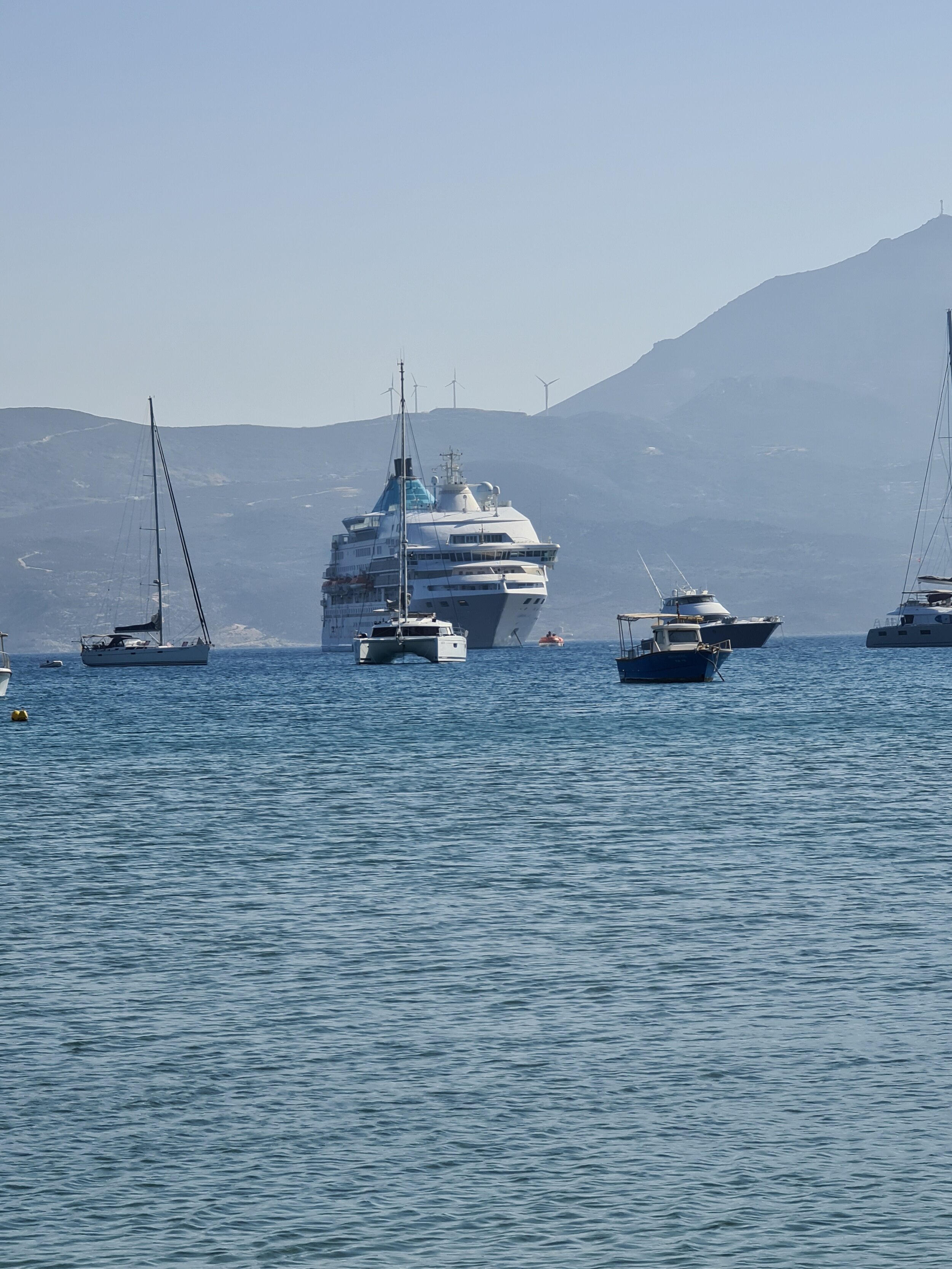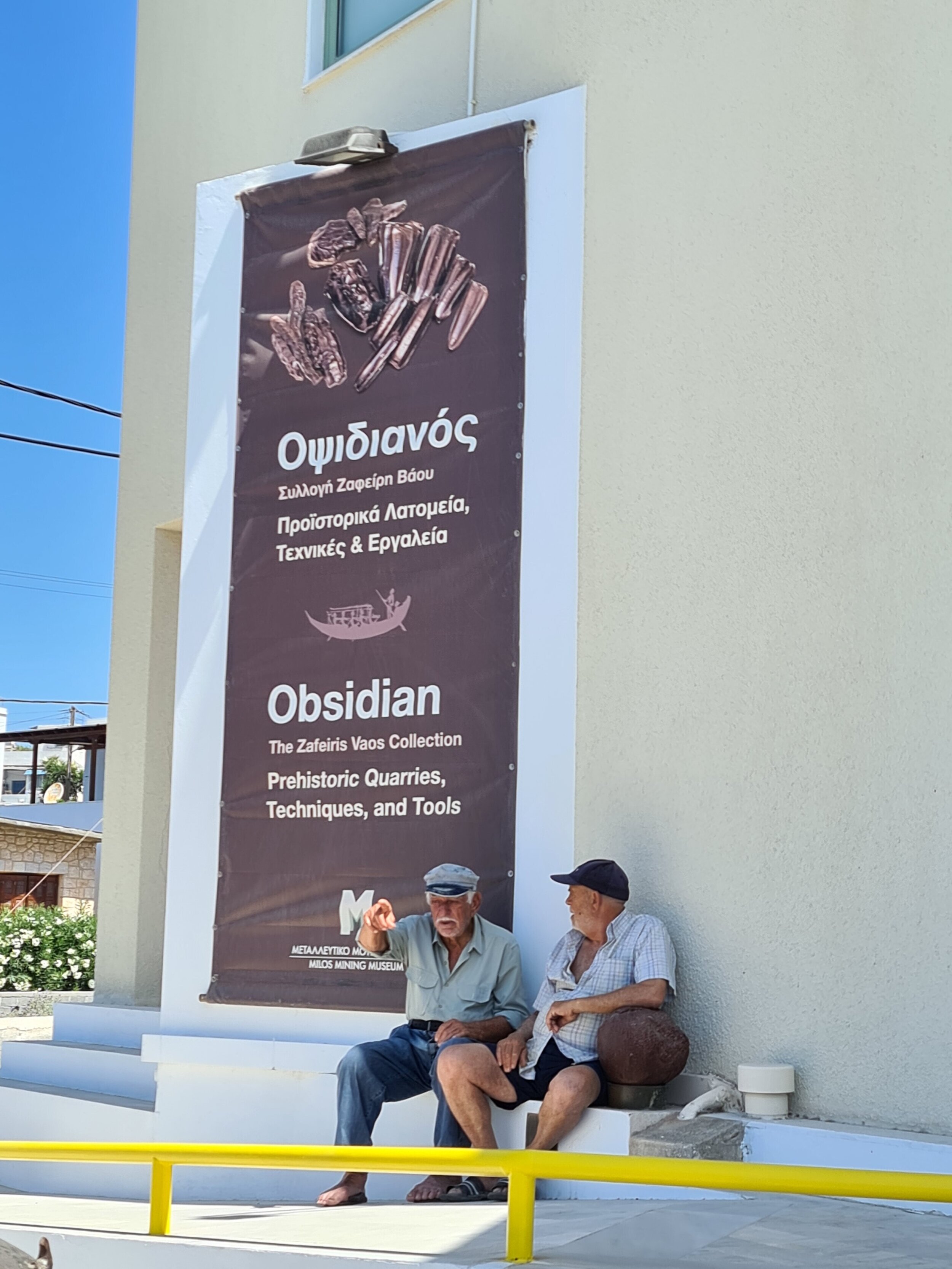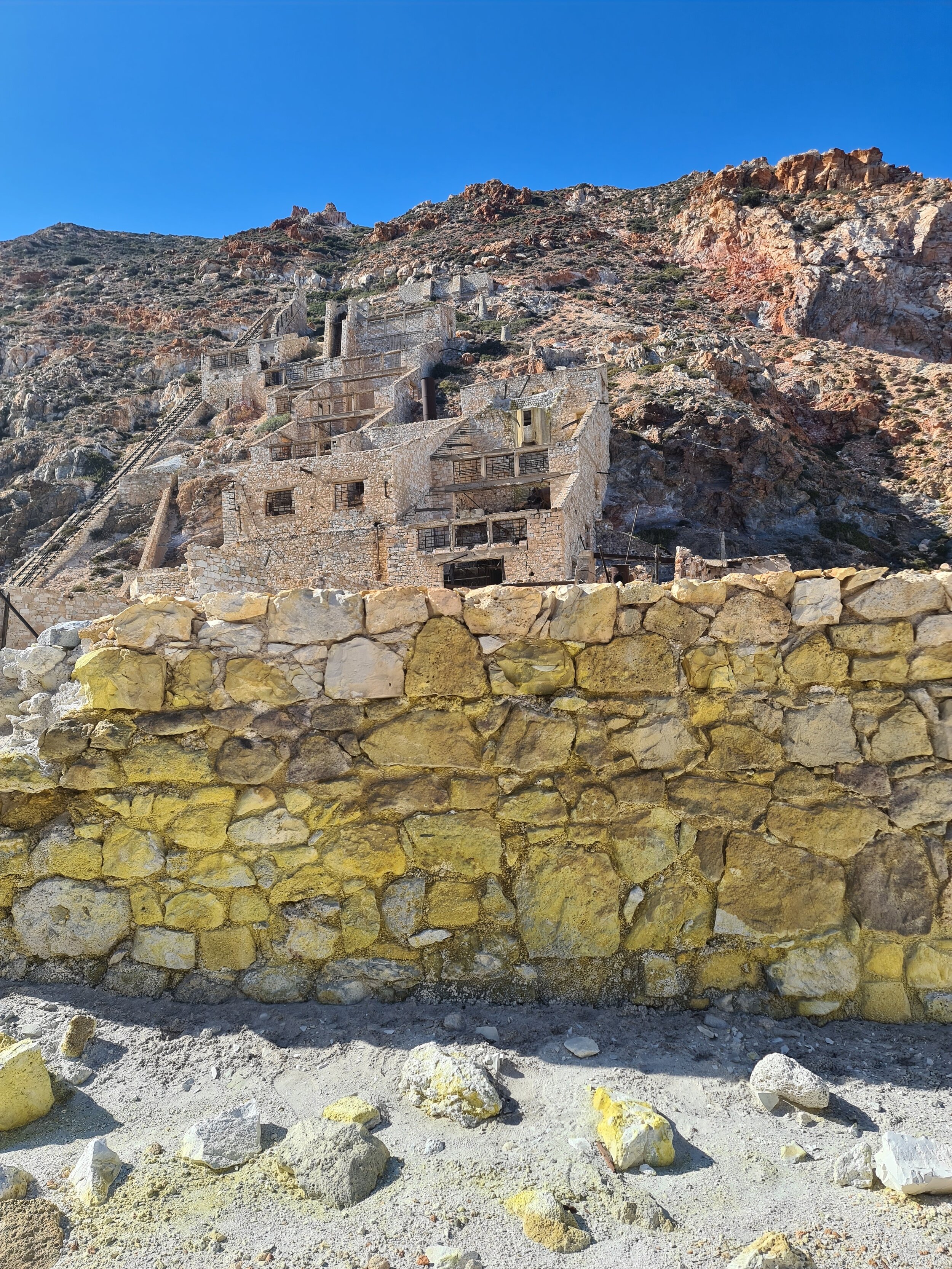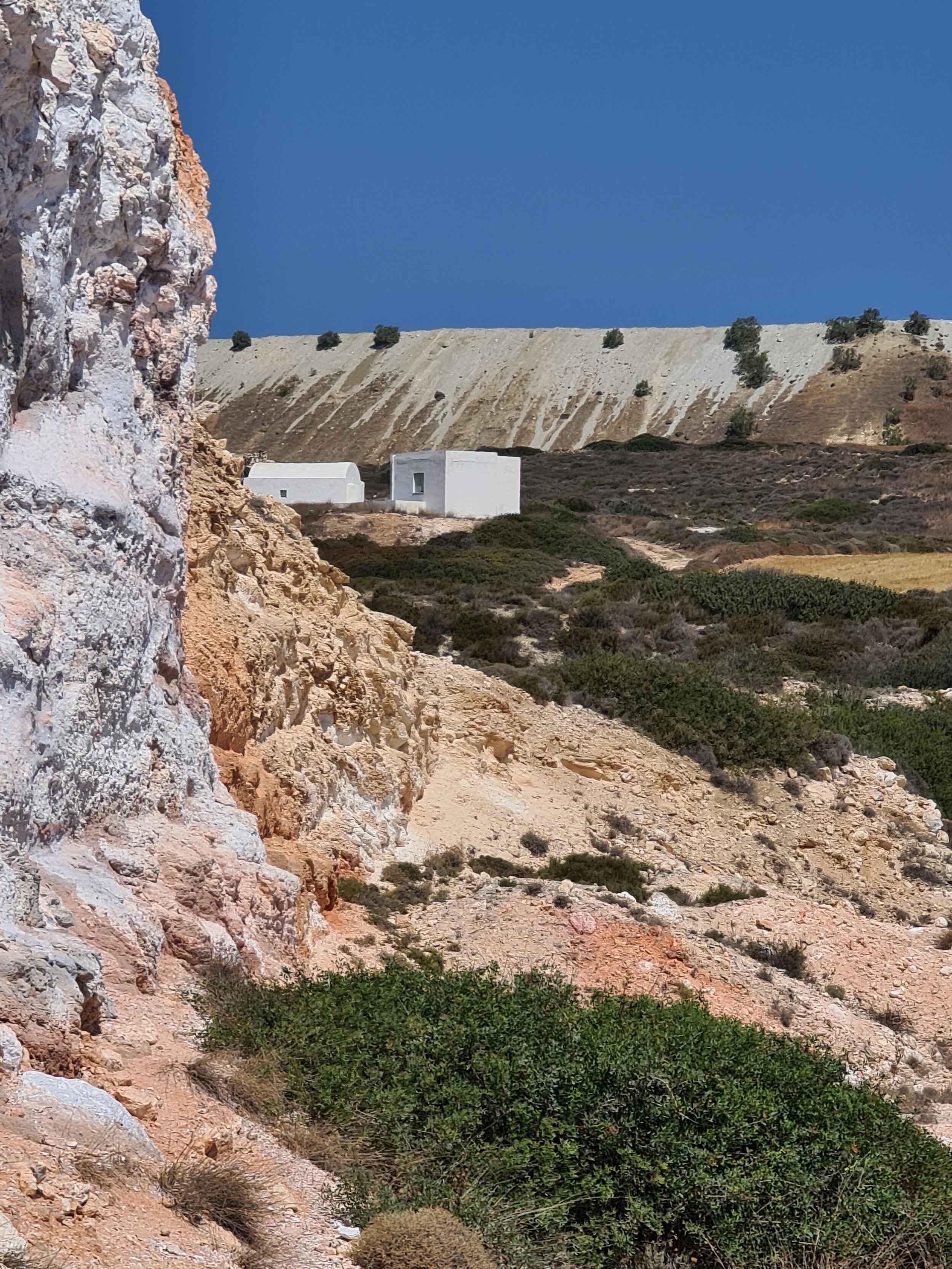Greece - Cyclades - Milos Bound
Three hours sailing west from Leros lies Levitha, population one family who have farmed here for over 200 years, and it shows - beautifully maintained rock walls topped with harsh dry brush, circular enclosed gardens with grapes, prickly pears and figs, established stock irrigation and large clear cropping fields.
We anchored in the middle of three south facing bays and ventured ashore - never have we seen so many sea urchins, hundreds lining the rocks and on the seabed right up to the beach, definitely a sandal swim.
Five hours and a very satisfying beam reach later we were in Amorgas, population 1,973. This year there is less urgency to be somewhere by a certain time and, with Turkey closed indefinitely, we’ve decided to slow down - less island hopping and more giving an island a chance to show itself to us. So with that in mind we stayed on Amorgas for more than a day and a night!
All the tavernas proudly proclaim that their food is sourced only from Amorgas and the next day we confirmed the veracity. We hired a quad bike for the day €20, drove up from the port to the chora and across to the 9th century Panagia Hozoviotissa monastery, it’s stunning - built into an eastern cliff face, it is a good 20 minute steep-step leg stretch up to cool marble and gold ikons, with the complimentary raki and loukoumi to finish.
Down the island, along a hot winding ridgeline to southern Kalotaritissa - a beautiful sheltered sandy inlet beach with fishing boats. The journey took us through several small towns, and large areas of flat green cultivated hilltops and shallow valleys, a surprising discovery on this seemingly dry barren island.
Across from Kalotaritissa is the island Gramvousa, population 0, a delightful anchorage with our own private sandy beach (except between 1200 - 1800 when small fishing ferries bring across the odd day tripper), church and nesting yellow footed gulls (Larus michahellis) and swallows for company.
Nostalgia and catching up with Connan and Lauren on Tigger took us back to Irakleia, population 141 - we had last been here in September 2019 and loved Alimiá - a small, very beautiful southern bay which unfortunately at this time of year (the start of summer) is very popular with day trippers and charters. On our second day we counted up to 28 boats so headed for the hills up to an abandoned village for several hours, but by nightfall it was just us and Tigger, mass exodus usually occurs around 1800 as they all head back to marinas and tavernas.
And like in 2019 when the meltimi started roaring, we sheltered down in Ios, population 1,754, in anchorages we knew would keep us safe. Hah - but not others! In the first two days we rescued three Poles and a pink flamingo one nautical mile off Gialos beach, wind gusting 20 knots, (Mythos reward) and the next day two Italian honeymooners half a nautical mile off Mylopotas beach, their kayak had capsized, they had lost their phone and they were headed for Thira.
Two new things I noticed on Ios - its dovecote-like castellated buildings, I knew this architecture - Tinos! Perhaps some families had moved between islands, not unusual. And stricter COVID measures, understandable as you watch the hundreds of twentysomethings pouring off the ferries and heading for the bars.
We’d been checking the MIQ website every morning, waiting for November to be released and suddenly, without warning on the 6th July there it was! with all dates crossed out. Many emails to MBIE and many, many hours spent on the site refreshing every five seconds, we became experts - at searching, not getting, but hey the wind was gusting 40+ knots down south at Magganari, we had Mon Desir to play with, data, and time to spend six-eight hours a day online - but to no avail… it’s the most powerless feeling knowing that you can’t beat the system, or in this case bots-for-purchase.
With Milos in our sights, Sikinos, population 273, was a convenient stop on the way and although neither of us felt inclined to head four hot kilometres uphill to the chora and check out the Zoodochos Pigi monastery, we did, local taxi and bus came in handy - it just felt disrespectful to arrive on an island and not give it some attention. The chora, sitting atop of what was once a heavily farmed valley, is a small quiet Cycladic town, an enchanting juxtaposition of freshly painted houses with well-kept gardens and abandoned stone homes with wild weeds. And although the monastery was closed, the walk up was on cleverly painted rock steps and afforded a great view.
Seven hours sailing and there was Milos! population 4,977 - two years in the wanting and worth every year of waiting - a should-have-been-geologist’s dream.
Approaching from the north, we encountered 30+ knots in the triangle of sea between Milos, Kimolos and Polýaigos so headed down the west coast to the sheltered main port town of Adamantas, a pity, as Polýaigos (“many goats”) was stunning - red and white cliffed bays of cerulean sea. But Adamantas was a good anchorage and an easy tender to a gas station and car hire. €60 for a day! - cruiseliner prices.
We’d caught up with Tigger again and the four of us made the most of having a car; exploring as much of the island as was permissible. The rental car guy was not keen for us to head off along unsealed mining roads so we checked out the abandoned saltpans near the airport (actually by accident we missed a turn), crept into a Kaolin mine on the way to Polomia, looked down on the crowded lunar limestone landscape of Sarakiniko beach, lunched up at Plaka (the hilltop chora), wandered through eerie 1-6th century AD Christian catacombs, climbed around a magnificent 3rd century BC Roman theatre, and clambered down to where the Venus de Milo was discovered by a farmer on his land in 1820 - the air temp was 36 degrees so we finished up with a well-deserved beer in picturesque Klima, a small seaside village with syrmata (houses) carved into rock with brightly coloured wooden doors.
The next day we found out where the WW2 bomb shelter was - now an exhibition space (open from 1900-2400) and the Mining Museum - superb curation and documentaries, we left feeling we knew Milos so much better. The car rental guy told us that the best way to see Milos was from a boat, luckily we had one.
Heading further south we passed at least 20 boats coming back up from Kleftiko; once we got there it was easy to see why - stunning limestone cliffs and caves and the clearest emerald water, so yes very popular, we counted 26 boats the first night, but managed to find a good sandy anchorage further east just out from the best caves!
The next couple of days were spent exploring the southern and eastern coasts - old abandoned pozzolana and sulphur mines, operational silica and perlite mines, a pink bentonite tailing hill, limestone caves, earthy rust, ochre, and white cliffs and beaches of rock treasures - like on Elba, the captain and I were able to satisfy our respective obsessions - machinery and caves for him, rocks for me.
We ventured further north to Kimilos, population 910, for a couple of nights - some mining, more agriculture, a west coast of steep hills and evidence of intensive farming at some point in history, cave houses up high and unusually no churches - but the caves and rocks were not a patch on Milos so back we went, checking out a couple more delightful fishing villages (Mandrakia and Firopotamos) on the way back to Adamantas.
Note: the volcanic nature of Milos (main harbour Adamantas is an ancient caldera) gives the island its long history of mineral wealth and dramatic landscapes.
Meanwhile, the border with Turkey is still closed and we continue to search for MIQ spaces, first thing in the morning, last thing at night and random hours during the day, dispiriting….
